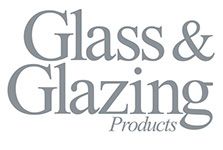
Windows are an easy target when it comes to pointing a finger at thermal inefficiencies. Arguably, they form the biggest ‘hole’ in a building’s façade. This is why the glazing industry works incredibly hard to achieve the best possible U-value requirements for windows and doors. As a consequence of continuous innovation, the majority of the market should find it relatively easy to comply with the new Part L of the building regulations: conservation of fuel and power.
The upgrades to Part L are heavily linked to the government’s future homes and buildings standard – a set of standards that come into effect in 2025 and will complement the building regulations. This will require new-build homes to be futureproofed with low-carbon heating and world-leading levels of energy efficiency.
The main change in Part L concerns U-values and the requirements vary depending on whether the windows and doors are for installation as replacements or in new dwellings. In the case of replacement, a window energy rating (WER) band B and a U-value of 1.4 W/(m²K) is a tick in the box. The A WER and a U-value of 1.2 W/(m²K) required for new dwellings are achievable, but certain parts of the market may find it challenging.
As we move towards 2025, it is rumoured that we will be looking at a WER band A++ and a U-value of 0.8 W/(m²K). This is perfectly possible and, as a company, we already offer windows that comfortably meet the future requirements of June 2023 with products offering U-values as low as 1.08 W/M²K, giving installers and specifiers of new build properties and schemes the confidence to futureproof projects.
While achieving this high level of performance is laudable, these windows inevitably cost more, can be heavier, potentially have thicker frames to support the bulkier glazing units and result in higher embodied carbon. With these factors in mind, it is worth remembering that it is not only the glazing industry and the supply chain that must continue on a path of innovation.
In some cases, other elements of the building will be used to compensate for a window with a lower U-value and it is the installer’s responsibility to get evidence of this. Installers cannot do this alone; building designers and specifiers must also step up to the plate and present solid proposals that embrace a holistic view of how new buildings and refurbishment projects are detailed to meet the regulations.
Some may see the new Part L and the demands that will come with the future homes and buildings standard as onerous. But as a manufacturer we can, within reason, achieve what the customer wants. We will guide installers wherever possible and are proud to be part of an industry creating more energy efficient, healthy and comfortable homes.
Stuart Judge,
Managing director, Tradelink



